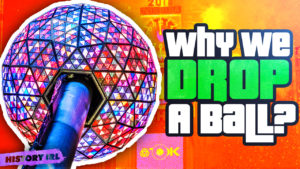Did invent santa clause
Christmas. The most wonderful time of the year. Or according to the IBISWorld research report, the biggest holiday of the year in terms of spending. It’s estimated that Americans spend about $228.4 billion on holidays throughout the year, and 59.2 percent or $135.16 billion of that big wad of cash is spent on Christmas alone – in fact, retailers rely on that yuletide irrational spending to make year end quotas.
This retail extravaganza is, as we all know, culturally driven. It’s Christmas! People need to buy food, decorations, GIFTS! But if we look at the real roots of Christmas – as in deep, deep down to the core of why we spend so much time making it special – we can see that this cultural experience of spending half the month’s salary on gifts that will likely be stuffed under someone’s bed actually bears no real correlation to either the birth of Jesus or the Pagan holiday that used to be celebrated on December 25th.
But when – and more importantly, why – did we start turning what is supposedly a day of worship into a spending spree?
Welp… it’s cuz of this guy. [show picture of Santa Claus] Or at least the retail marketers who use him to sell stuff.
The image of this jolly red man has been permanently etched into the public consciousness and has become an eternal cultural symbol for Christmas, nearly all over the world. But who is he? Where did he come from? Did he just slide down to Earth in his sleigh like a Christmas miracle or is he a piece of propaganda invented by greedy capitalist businessmen? And more importantly…was he ever a real person?
Short answer, YES! There once was a widely beloved Saint Nicholas who brought joy and peace.
But also no, Nick would have never encouraged mobs of people to ravage Walmart at 5PM on Thanksgiving to get early access to black friday doorbusters.
Chapter 1: The legend of St. Nicholas
The real Santa Claus, or at least the man that inspired the icon we know now, was a generous man named St. Nicholas, and his reputation preceded him all throughout Europe. He was a gift-giving bishop that lived during the 4th century in the Lycian Greek town of Myra (now Demre). The legend of his big heart dates back centuries.
The most well known St Nicholas legend cames from a book named The Golden Legend published by a Genoese churchman in 1260 that told the story of how St. Nick brought three bags of gold to a poor man’s house in order to pay for the dowries of his three daughters so that they would not be sold into prostitution. This story has been told and retold a million times, and it’s one of the stories that solidifies him as the patron saint of children. In some tellings, it’s said that he dropped the bags down their chimney and that the gold landed in the stockings the girls left to dry by the fireplace, which is why we put up stockings around Christmas.
But according to historians…that’s all he probably was. A legend. A reputation attached to some mysterious figure. All of the accounts that mention him were writings, diary entries of people that believed that he was real, not exactly historical accounts that he really did exist.
But regardless if St. Nick did exist or not, people still believed in him, even centuries later. Every year, many Christians celebrate this memory on December 6th during St. Nicholas Day. In 16th and 17th century Europe, he was often depicted handing out symbols of a bountiful harvest like apples, nuts, and baked goods. And in the Netherlands, where he was known as Sinterklaas, on St. Nicholas Day, a person would dress up like him and go from house to house, giving out either or a reward or a punishment to children depending on their work. Good students got gifts similar to a sack of gold like in the legend, while bad students got coal.
So the traditions are definitely there: putting up stockings, getting gifts if your good, the dreaded lump of coal. But how the hell did this [show pic of st. nick] become THIS [show jolly red santa]
Chapter 2: The original Santa Claus
The earliest mentions of the name Santa Claus came from two tiny references in Rivington’s New York Gazetteer published in the 1770’s where they literally mention “St. Nicholas, otherwise called Santa Claus,” but the root of the American name and legend goes to the 25,000 Swiss migrants who emigrated to New York, North Carolina, and Pennsylvania, coming from parts of Europe that celebrated St. Nicholas’ Day… Who was known in their native tongue as the Dutch Sinterklaas which morphed into Samichlaus or Santi-Claus, that upon coming to America, turned into Santa Claus. Wooof, that was effort!
But the image of St. Nicholas coming down the chimney to drop off presents doesn’t come until 1822, in Clement Clarke Moore’s poem “A Visit from St, Nicholas” – you know it, it’s the famous poem that starts with “Twas the night before Christmas”? While he originally wrote it for his children, it went 1800’s viral and is now considered largely responsible for the image of Santa looking like a “jolly old elf” with the big belly, who flew from house-to-house in his sleigh pulled by 8 flying reindeer.
In 1881 cartoonist Thomas Nast drew Santa based on Moore’s poem that laid the groundwork for the modern day Santa image; from his big white beard, his workshop in the Northpole, his jolly little elves, and his wife, Mrs. Claus! But it’s important to note that in these early interpretations, Santa was a small elflike little creature!
From this, his popularity grew. The North American version of Santa Claus tried to move back to Europe but some places ultimately rejected this version in favor of their own holiday gift-givers. After World War II, even the Soviet Union tried to make their own version of Santa, except this one wore blue and brought presents on the New Year!
Needless to say, Santa had quite the reputation, but he was still depicted in many different ways – from a tall fat man to a jolly little elf! But the universal image of Santa we know today is all thanks to good old Coca-Cola.
Chapter 3: Santa goes commercial
In 1931, Coca-Cola commissioned Haddon Sundblom to paint Santa for Christmas advertisements. Sundblom established him as a warm, happy fellow with human features – almost like a jolly grandpa. Just like Thomas Nast, Haddon took inspiration from Clement Clark Moore’s poem but made Santa look more wholesome, a little less strict.
Now you might be thinking – is this the reason why Santa wears red? The answer’s not really! Remember Thomas Nast already depicted Santa wearing his iconic red santa suit with the white fur trim. Coca-cola only did a remarkably good job at getting the word out that Santa wore red and looked like a human!
Historians unanimously attribute this advertising campaign for our modern image of Santa today because of how widespread their reach was. There’s even a whole myth that said Coca-cola INVENTED Santa! While this is definitely a funny story to tell over the dinner table, Coca-cola only used the reworked image of Santa to sell more coke.
Today, we can still see the same kind of holiday advertising from Coca-cola during the holidays, and they’re not the only ones to do so! Shopping mall Santas can be seen as far back as 1841 when a Philadelphia shop featured a life-size Santa model that attracted children. Though that sounds like the plot of a Christmas themed horror film to me.
It was only a matter of time before they took that model and turned it into a real live Santa that dragged children and their reluctant parents into the store. Which would lead to Macy’s Santa that first appeared in 1924 at their flagship New York City location, and later spread to stores throughout the entire country. This is where the tradition of sitting on Santa’s lap and telling him what you want for Christmas was born.
Conclusion
From a kind saint to a shopping mall attraction, Santa Claus has been a beacon of joy that symbolizes generosity and joyfulness in the holiday season. Whether you’re celebrating him on St. Nicholas’ Day somewhere in Europe or impatiently waiting for him to climb down your chimney on Christmas Eve, one thing’s for sure: he’s really good at making kids happy.
Now as for the question of whether or not Santa Claus was real, well, of course, he was! That’s kinda the whole point of this video! Santa is REAL… REAL-LY good advertising that is; and he lives in our hearts as greed dressed up in a jolly red suit and scratchy elastic beard.
Host: Timo Bach – Research/writer: Lyka Naranjo – Video Editor: Isaiah John Jornales








